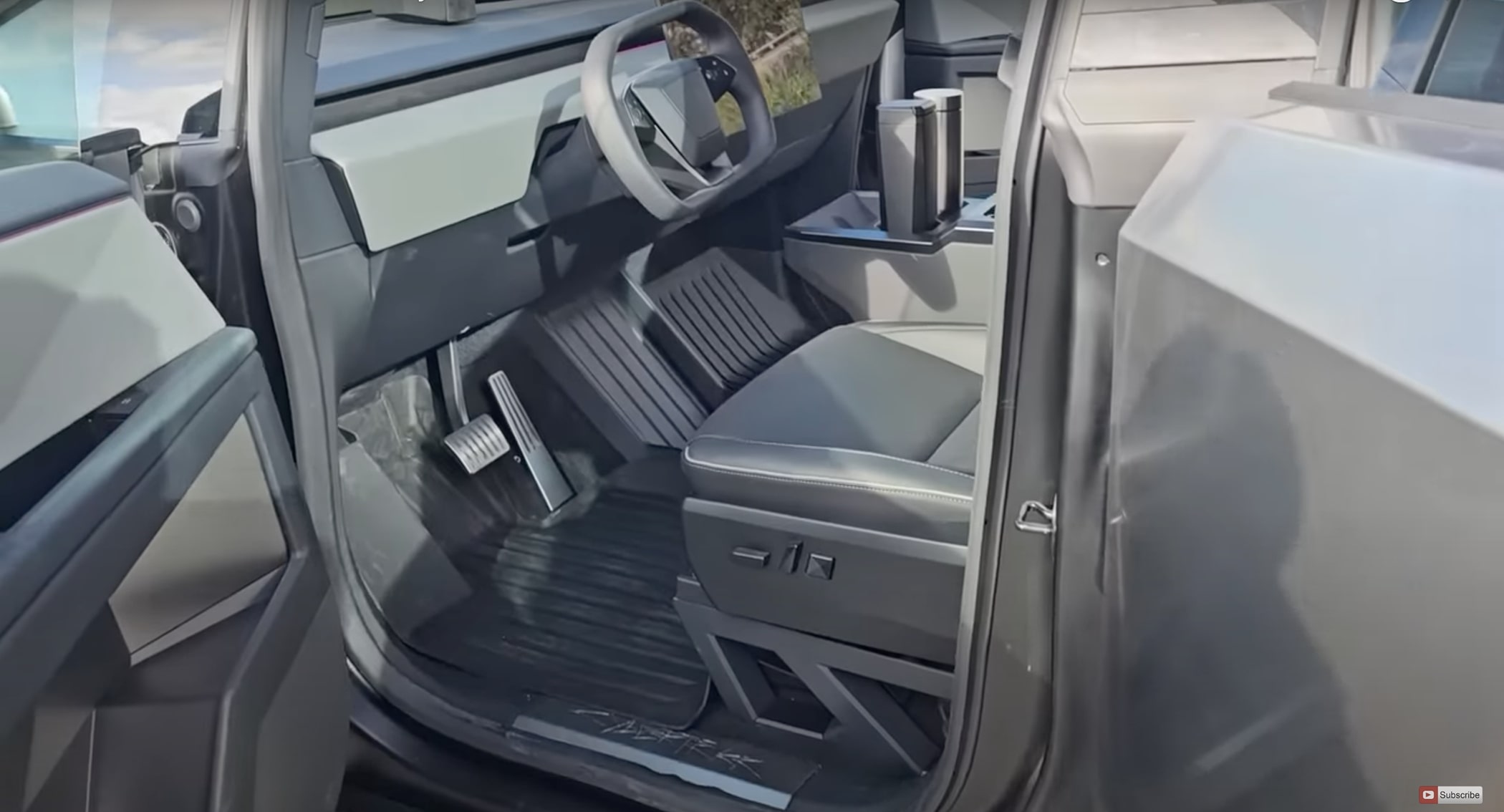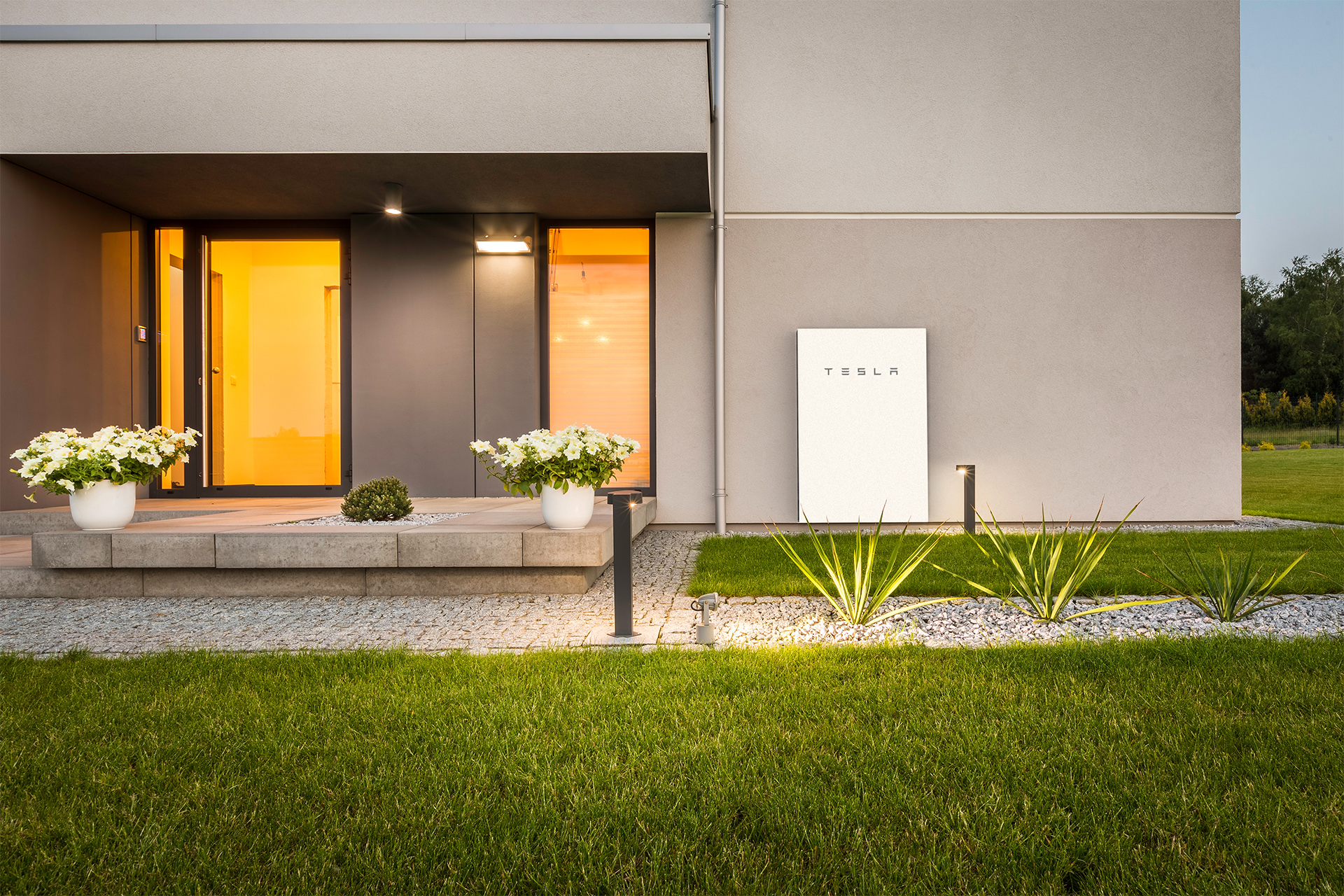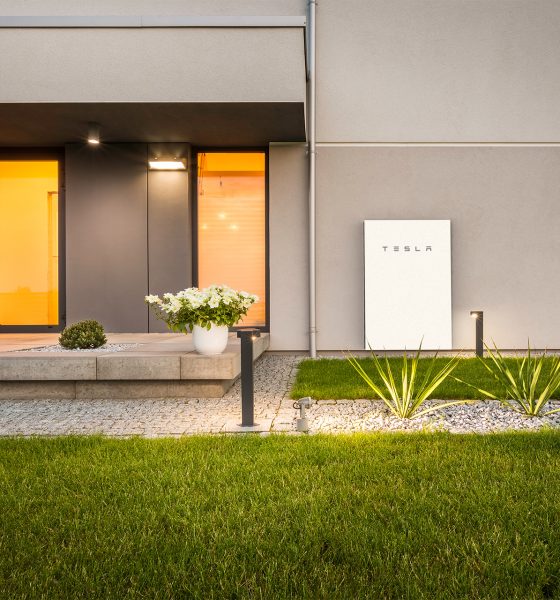Tesla has launched its Powerwall home energy storage systems in two new countries over the past couple of months, most recently including in Taiwan.
On Wednesday, the Tesla Energy account on X posted that the Powerwall is now available in Taiwan, including a link to the Taiwanese page for the energy storage product. The page shows the Powerwall 2, though it doesn’t include the Powerwall Plus or upcoming Powerwall 3.
Powerwall now available in Taiwan → https://t.co/0zlBsvOInk pic.twitter.com/UwbhJAcgOH
— Tesla Energy (@teslaenergy) December 13, 2023
Along with launching the Powerwall in Taiwan this week, Tesla last month posted on X about the home energy storage device launching in Portugal, additionally including just the Powerwall 2.
Powerwall now available in Portugal → https://t.co/amXCu6qB2Y pic.twitter.com/qztnRSHH4Q
— Tesla Energy (@teslaenergy) November 16, 2023
Tesla’s Powerwall systems offer home energy storage for homeowners generating electricity from solar power. Residents are then able to use the stored electricity to either power their electric vehicles (EVs), offer backup power to their homes, or send it directly to the electrical grid — the latter of which is often used in times of peak demand.
In the past, Tesla Powerwalls have been used by many to keep the lights on during periods of inclement weather, including those affected by a 2021 blizzard in Texas that caused outages across the state. These events also included an icing event in Texas earlier this year that caused outages, though 3,700 homeowners with Powerwalls were able to keep their homes warm and powered up with the technology.
Tesla announced last month that it surpassed 1 GWh in its European Powerwall fleet, which the company says offers enough distributed, stored energy to power an average of 41,000 homes for 12 hours.
While Tesla has been quietly installing some of its next-generation Powerwall 3 devices throughout the latter part of this year, most of the world still only has access to the Powerwall 2, and the new hardware can’t yet be ordered on the company’s website, no matter the region. Still, the U.S. website says the Powerwall 3 will become available in 2024.
The company also dropped the price of the Powerwall 2 in September, suggesting that it may be preparing an official launch of the Powerwall 3 soon.
What are your thoughts? Let me know at zach@teslarati.com, find me on X at @zacharyvisconti, or send your tips to us at tips@teslarati.com.

News
Tesla Full Self-Driving v14.2’s best new feature is not what you think

Tesla Full Self-Driving v14.2 rolled out late last week to Early Access Program (EAP) members, but its best feature is not what you think.
While Tesla has done a great job of refining the performance of the Full Self-Driving suite with the latest update, there are some other interesting additions, including one that many owners have requested for some time.
Upon the release of v14.2, many owners recognized the Blue Dot next to the Autopilot tab in Vehicle Settings, notifying them of a new feature. What was included as a new feature in the new update was a Full Self-Driving stats feature, which now will show you how many miles you’ve traveled in total, and how many of those miles were driven using FSD:
🚨 The coolest non-driving change of Tesla Full Self-Driving v14.2 pic.twitter.com/HOJcFaV2Ny
— TESLARATI (@Teslarati) November 21, 2025
The feature seems to be more of a bragging rights thing than anything, but it will also give drivers a good idea of how many miles they are using Full Self-Driving for. Those who use telematics-based insurance services will also be able to run experiments of their own, and could determine whether their premiums are impacted by the use of Full Self-Driving, and whether it is more advantageous to use over manual driving.
Tesla rolled out numerous other improvements with Tesla Full Self-Driving v14.2, most notably, the company seems to have resolved previous complaints about brake stabbing and hesitation. This was a major complaint in v14.1, but Tesla has seemed to resolve it with this newest branch of the FSD suite.
There were also improvements in overall operation, and it was notably smoother than past versions. Speed Profiles are seemingly refined as well, as they seem much more fixed on how fast they will travel and how aggressive they will be with things like passing cars on freeways and lane changes.
In future updates, Tesla plans to add Parking Spot selection, along with overall operational improvements. However, CEO Elon Musk recently said that the next branch, Full Self-Driving v14.3, will be where the “final piece of the puzzle is placed.” Tesla believes it is close to solving autonomy, so v14.3 could be a major jump forward, but it remains to be seen.
News
Tesla adjusts crucial feature as winter weather arrives

Tesla has adjusted the functionality of a crucial climate feature as Winter weather has started to arrive throughout some parts of the United States. The new feature was highly requested by owners.
Tesla has a Cabin Overheat Protection feature that helps keep the temperature regulated if it reaches a certain threshold. Inversely, it can be used in cold weather as well, which will automatically warm the cabin if it sinks to a temperature that is too low for the owner’s comfort.
This is a great way to keep the cabin either warmed up just enough or cooled down just enough so that it never gets too hot or too cold. Extreme temperatures could damage certain parts of the vehicle or damage personal belongings that are kept inside the car.
Overheat protection is a great thing to have in hot climates like Arizona or Texas, especially with the Premium trims of the Model 3 and Model Y, which feature a glass roof.
Many owners appreciate the feature, but they argue that using it at home will utilize too much energy, especially during extreme temperatures. For a while, many Tesla fans have requested an option to disable this feature when the car is parked at home, which the company recently added, according to Not a Tesla App.
The feature is part of Software Version 2025.44.3, and the release notes state:
“You can now choose Exclude Home when Cabin Overheat Protection or No A/C is enabled.”
Tesla has been great at listening to what owners want with new features, and this is one that will reserve some charge and prevent unnecessary utilization of available power, especially as the car is parked at home. If owners want to condition the cabin or get the car ready for operation with a comfortable interior, they can utilize the Tesla app to adjust the climate.
Elon Musk
Tesla CEO Elon Musk sends rivals dire warning about Full Self-Driving

Tesla CEO Elon Musk revealed today on the social media platform X that legacy automakers, such as Ford, General Motors, and Stellantis, do not want to license the company’s Full Self-Driving suite, at least not without a long list of their own terms.
“I’ve tried to warn them and even offered to license Tesla FSD, but they don’t want it! Crazy,” Musk said on X. “When legacy auto does occasionally reach out, they tepidly discuss implementing FSD for a tiny program in 5 years with unworkable requirements for Tesla, so pointless.”
I’ve tried to warn them and even offered to license Tesla FSD, but they don’t want it! Crazy …
When legacy auto does occasionally reach out, they tepidly discuss implementing FSD for a tiny program in 5 years with unworkable requirements for Tesla, so pointless. 🤷♂️
🦕 🦕
— Elon Musk (@elonmusk) November 24, 2025
Musk made the remark in response to a note we wrote about earlier today from Melius Research, in which analyst Rob Wertheimer said, “Our point is not that Tesla is at risk, it’s that everybody else is,” in terms of autonomy and self-driving development.
Wertheimer believes there are hundreds of billions of dollars in value headed toward Tesla’s way because of its prowess with FSD.
A few years ago, Musk first remarked that Tesla was in early talks with one legacy automaker regarding licensing Full Self-Driving for its vehicles. Tesla never confirmed which company it was, but given Musk’s ongoing talks with Ford CEO Jim Farley at the time, it seemed the Detroit-based automaker was the likely suspect.
Tesla’s Elon Musk reiterates FSD licensing offer for other automakers
Ford has been perhaps the most aggressive legacy automaker in terms of its EV efforts, but it recently scaled back its electric offensive due to profitability issues and weak demand. It simply was not making enough vehicles, nor selling the volume needed to turn a profit.
Musk truly believes that many of the companies that turn their backs on FSD now will suffer in the future, especially considering the increased chance it could be a parallel to what has happened with EV efforts for many of these companies.
Unfortunately, they got started too late and are now playing catch-up with Tesla, XPeng, BYD, and the other dominating forces in EVs across the globe.










